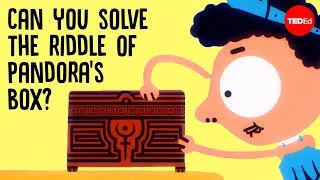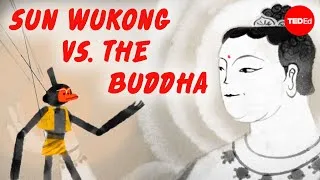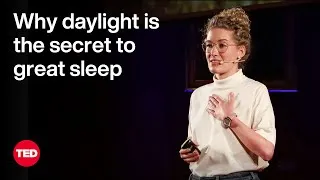Preparing, Cooking and Serving Food in English - Visual Vocabulary Lesson
視覺字彙 — 食物和烹飪
189,305 views ・ 2021-02-20
請雙擊下方英文字幕播放視頻。
00:01
Hi, I’m Rich. Welcome to Oxford Online
English! In this visual vocabulary lesson,
0
1280
7440
嗨,我是Rich。歡迎來到Oxford Online
English!在本節視覺字彙課程裡,
00:08
you can learn words and phrases
to talk about food and cooking.
1
8720
5280
您會學到談論食物和
烹飪的單字和片語。
00:14
A question for you: do you want to watch
this video with subtitles? You can – it’s
2
14960
5520
這有一個問題:您想看有
字幕的影片嗎?您可以的 —
00:20
easy! Turn them on now by clicking
the ‘CC’ icon in the bottom right.
3
20480
6240
那很容易!現在點擊影片播放軟體底部
右側的“CC”選項打開字幕。!
00:27
Or, on mobile, tap the settings
icon to turn on subtitles.
4
27520
5200
或者,在行動電話上,敲擊設定
圖示並打開字幕。
00:38
Peel the courgettes.
5
38480
1280
去皮小黃瓜。
00:42
‘Peel’ means to take the skin off some fruit
or vegetables. Some foods are easy to peel,
6
42320
7760
“Peel”意思是一些蔬果去皮。
一些食物很容易去皮,
00:50
like bananas. With other ingredients, you
might need to use a knife or a peeler.
7
50080
7760
像是香蕉。有其他佐料,您也許
要用一把刀或一個削皮器。
01:00
Cut the tomatoes into quarters.
8
60560
1840
番茄切成小塊。
01:04
When talking about preparing food, the
combination ‘cut…into…’ is common. For example,
9
64880
7840
在談論準備食物時,組合
“cut…into…”是常用的。例如,
01:12
you might hear: ‘Cut the chicken into six
pieces’, or ‘Cut the aubergine into small cubes.’
10
72720
8160
您可能會聽到: “Cut the chicken into six
pieces”,或“Cut the aubergine into small cubes.”
01:22
There’s one common exception to this pattern;
11
82000
1680
這個建構有一個常見的例外;
01:24
you cut something *in* half, not ‘into’. For
example: ‘Cut the lemon in half,’ not ‘into half’.
12
84560
9440
您切某物 *in*一半,不是“into”。例如:
“Cut the lemon in half,”不是“into half”。
01:38
Cut the radish into thin slices
Slice the radish thinly.
13
98160
5600
蘿蔔切成薄片,
蘿蔔切薄一點。
01:45
Many words connected with cooking can be both
verbs and nouns. ‘Slice’ is a common example.
14
105920
8880
很多與烹飪關聯的單字可以是
動詞和名詞。“Slice”是一個常見的例證。
01:55
You can cut something into slices, or just
use slice as a verb: ‘Slice the cucumber’,
15
115440
8560
您可以把某物切片,或只用
slice擔當動詞:“Slice the cucumber”,
02:04
‘slice the carrots’, and so on.
Halve and deseed the peppers.
16
124000
7280
“slice the carrots”,類似這樣的。
圓椒切成一半並去籽。
02:14
‘Halve’ is the verb from ‘half’. It’s an efficient
way to say ‘cut something into two pieces’.
17
134000
8240
“Halve”是源自“half”的動詞。它是一個說“cut
something into two pieces”的有效方式。
02:22
You can also use ‘quarter’ as a verb. For example:
18
142240
3520
您也可以用“quarter”擔當動詞。例如:
02:25
‘Quarter the tomato’ and ‘Cut the tomato
into four pieces’ have the same meaning.
19
145760
6560
“Quarter the tomato”和“Cut the tomato
into four pieces”有相同的意思。
02:34
‘Deseed’ means you remove the seeds.
With peppers, you also need to remove
20
154960
6640
“Deseed”意思是您拿掉蔬果的籽。
您也需要拿掉圓椒的瓤
02:41
the pith – the white flesh on the inside.
Chop the onion as finely as possible.
21
161600
8720
– 圓椒裡面的白肉。
洋蔥盡量切細一點。
02:53
Usually, ‘chop’ means to cut something into
medium-sized pieces, perhaps not in a precise
22
173040
6880
通常,“chop”意思是把某物切成中等
尺寸的小塊,可能不是用
02:59
way. However, if you chop something finely,
you cut it into the smallest pieces possible.
23
179920
6880
精確的方式。然而,如果切小某物,
您盡量切成最小塊。
03:09
Dice the red pepper.
‘Dice’ means to cut into small pieces.
24
189440
6000
紅圓椒切成丁。
“Dice”意思是切成小塊。
03:16
More specifically, ‘dice’ means that you cut
something in two directions. If you dice a pepper,
25
196160
7440
更特別的是,“dice”意思是您在兩個方向
來切某物。如果您切圓椒,
03:23
you first cut it into strips, and
then cut the strips into small pieces.
26
203600
5600
要先切成條,然後把
條切成小塊。
03:31
Mix the ingredients together.
Stir the ingredients to mix them.
27
211760
5600
拌好調味料。
拌攪調味料,混合他們。
03:39
Here, ‘mix’ and ‘stir’ have the same meaning.
In general, ‘stir’ is more specific, because
28
219280
7200
在這裡,“mix”和“stir”有相同的意思。
通常,“stir”是特定一些。因為
03:46
it means to use some kind of implement – like a
spoon – to mix whatever you’re mixing. You can
29
226480
8080
它的意思是使用一些工具 – 像是一個湯勺
– 來攪拌任何您要拌的東西。您可以
03:54
mix something with your hands, or by putting it
in a container and shaking it, or in other ways.
30
234560
6880
用您的手來攪拌某物,或把某物放入
一個容器裡搖晃它,或用其他方式。
04:06
Stir fry the veggies on a high heat.
31
246320
2400
猛火爆炒蔬菜。
04:10
Turn the heat up to high and fry the
vegetables, stirring continuously.
32
250560
5200
火調到最大,炒蔬菜,
持續地拌炒它。
04:18
Often, you can say the same thing in
fewer words by using a more specific
33
258000
5040
通常,您可以運用特定的動詞來
用更少的單字說
04:23
verb. Both these sentences are fine
and both have the same meaning,
34
263040
5040
同一件事。這兩個句子都可以,
兩者都有相同的意思。
04:28
but in the first sentence you save words
by using a more specific verb: ‘stir fry’.
35
268800
8480
但是在第一個句子裡您運用更特定的
動詞“stir fry”省略了單字。
04:40
Bring the water to the boil
and then add the dumplings.
36
280560
3040
水煮開,然後放餃子。
04:45
In cookbooks and recipes,
you’ll often see the phrase
37
285760
3360
在烹飪書和食譜裡,
您常會看到片語
04:49
‘bring the water to the boil’.
This means that you boil the water,
38
289120
4240
“bring the water to the boil”。
這意思是水煮開,
04:53
and when it starts boiling, you’ll
add something or do something else.
39
293360
5480
在它開始沸騰時,您會
放入某些東西或做某事。
05:00
Turn the heat down to low and
simmer the soup for twenty minutes.
40
300800
3680
或轉小,湯燉二十分鐘。
05:06
If you need to simmer something,
you turn the heat down
41
306400
3440
如果您要燉某些東西,
火要轉小到
05:10
until it is *just* boiling. There are a few
bubbles, but it isn’t boiling vigorously.
42
310400
5920
*剛好*沸騰的狀態。有一些泡,
但不會劇烈沸騰。
05:19
Fry the meatballs until browned on both sides.
Deep fry the potatoes and leave to dry.
43
319200
9360
煎炸肉丸直到兩邊都成金黃色。
油炸馬鈴薯並瀝幹它。
05:30
If you use the verb ‘fry’ in English,
it generally means shallow-frying:
44
330240
4400
如果您用英文動詞“fry”,
它一般的意思是油煎:
05:35
when you fry something in a little bit of
oil or butter. Use the verb ‘deep fry’ if
45
335200
7120
您在一些油或黃油裡煎炸某些東西。
如果您想談論在沸騰的
05:42
you want to talk about cooking something
in boiling oil, like fried potatoes.
46
342320
6000
油裡煮什麼東西,像是油炸馬鈴薯,
使用動詞“deep fry”
05:49
‘Brown’ is another useful verb. When cooking
meat, you often fry the meat first to brown
47
349520
6800
“Brown”是另一個有用的動詞。在煮肉時,
您通常先把肉丸炸成金黃色
05:56
it – you cook it until it is brown on the
outside, but probably not cooked in the middle.
48
356320
9520
– 您煮它直到外層是金黃色,
但是有可能中間沒煮熟。
06:06
Pre-heat the oven to 180, then roast
the chicken for around one hour.
49
366800
5680
預先加熱烤箱到180度,然後
考雞肉約一個小時。
06:14
Here’s a question for you: ‘roast’ and ‘bake’
50
374800
3520
這有一個問題:“roast”和“bake”
06:18
both mean to cook something in the
oven, but what’s the difference?
51
378320
4960
兩者意思是在烤箱裡煮某些
東西,但是,區別是什麼?
06:25
There are different answers to this. Technically,
‘roast’ means to cook something uncovered,
52
385600
6400
對此,有不同的答案。技術上,
“roast”意思是煮某些沒有包覆的東西
06:32
until it turns brown. However, in everyday
language, ‘roast’ is generally used for
53
392000
6480
直到它變成金黃色。然而,在日常說法裡,
“roast”一般適用於
06:38
meat and vegetables, and ‘bake’ is
generally used for bread, cakes, and fish.
54
398480
6080
肉類和蔬菜,而“bake”一般
適用於麵包、蛋糕和魚。
06:47
We grilled the shrimp kebabs over a charcoal fire.
We cooked the shrimp kebabs on the grill.
55
407760
7760
我們在炭火上面烤蝦肉串。
我們做燒烤蝦肉串。
06:57
With cooking, you can often use different
verbs or verb phrases to say the same thing.
56
417440
4960
在烹飪方面,您通常可以用不同的
動詞或片語來說同一件事。
07:03
For example, you can grill food, or cook
food on the grill. You can roast food,
57
423040
6160
例如您可以燒烤食物,或在炭火上烹飪。
您可以烤食物,
07:09
or cook food in the oven. It
doesn’t matter which you use.
58
429200
3920
或在烤箱裡烹飪食物。您用
哪一個都沒有問題。
07:13
The verb ‘grill’ is often used when you cook
something on a barbecue, but your cooker
59
433920
7280
動詞“grill是您在燒烤架上烹飪食物時
常用的,但是在您廚房裡的
07:21
in your kitchen might have a grill, and you can
also buy electric grills to use in your kitchen.
60
441200
8640
廚師也許有一個烤架,您也可以買
電子烤架到您的廚房裡用。
07:31
Blend the soup until fairly smooth.
I used a hand blender to puree the sauce.
61
451520
7600
把湯攪均勻。我用一個手持
攪拌器來打醬泥。
07:41
You can blend something with a hand blender,
like you saw here, or with a regular blender.
62
461520
5520
您可以用一個手持式攪拌器來拌某些東西,
像您在這看到的,或是用一個常規的攪拌器。
07:48
If you blend something for a longer time, it will
come out smooth. The opposite of smooth here is
63
468480
6320
如果您拌某些東西很長時間,它會很均勻。
在這裡smooth的反義詞是
07:55
‘chunky’ – meaning you blend it for a short
time, and there are still some solid pieces.
64
475360
7440
“chunky” – 意思是您拌它時間很短,
仍然有一些固體。
08:07
Add a dollop of sour cream
to the soup and mix it in.
65
487920
3920
加少量的酸奶油到湯裡,
並把它拌混入湯裡。
08:13
Add a spoonful of sour cream to the soup.
A ‘dollop’ means a small amount. It’s not
66
493840
8720
加一整勺的酸奶油到湯裡。
一個“dollop”意思是一個少量的。它不是
08:22
specific, but it generally is used to mean around
one spoonful. You can use ‘dollop’ for things
67
502560
8640
特定的,但是它一般用來指大約一整勺。
介於固體和液體之間的
08:31
which are between solid and liquid, like yoghurt,
thick cream, sour cream, or other thick sauces.
68
511200
9040
東西,您可以用“dollop”像是優格、
濃奶油、酸奶油或其他濃醬汁。
08:43
Sprinkle with grated parmesan
cheese before serving.
69
523120
4000
用餐前撒上帕瑪森起司粉。
08:49
You can might *sprinkle* something on your food
before you serve it, like cheese. Another example:
70
529040
6160
在用餐前,您能*撒*某些東西到您的
食物上面,像是起司粉。另一個事例:
08:55
you might sprinkle pepper, paprika or
oregano on top of a dish once it’s ready.
71
535200
6800
一旦菜煮好了,您也可以撒胡椒、辣椒粉
或奧勒岡葉到菜上面。
09:04
They served the steak with green
beans and corn on the side.
72
544800
4240
他們放綠豆和玉米在
盤側佐餐牛扒。
09:10
You can use ‘on the side’ for vegetables or
other things which accompany the main dish.
73
550960
6560
您可以用“on the side”在蔬菜或
其他佐餐主菜的東西上。
09:20
Garnish with a mint leaf and serve.
74
560000
2800
用薄荷葉裝點並佐餐。
09:24
A garnish is something you add mainly for
decoration, to make the food look good; more attractive.
75
564960
7040
一個裝點是您主要為了裝飾而添加的
東西,食物會好看,更吸引人。
09:32
Some garnishes are chosen for their flavour,
but you might garnish a dish with something
76
572720
6240
一些裝點根據喜好來選擇,
但是您可以用一些不能
09:38
that isn’t intended to be eaten. You can also
garnish a drink; cocktails often have a garnish.
77
578960
7840
吃的東西裝點菜盤。您也可以裝點一份飲料;
雞尾酒通常會有裝點。
09:49
Pour the chocolate icing generously over the top.
The verb ‘pour’ is mostly used with liquids.
78
589440
9440
慷慨地澆巧克力糖霜到上面。
動詞“pour”最常用於液體。
09:58
You can also use the verb ‘drizzle’ to mean that
you pour a small amount of something. For example:
79
598880
5840
您也可以用動詞“drizzle”來表達
您澆少量的東西。例如:
10:05
‘Drizzle some olive oil over the salad.’
‘Generous’ is more often used to describe people,
80
605280
8240
“Drizzle some olive oil over the salad.”
“Generous”常用於描述人,
10:13
but you can also use it to talk about food. For
example, you can have a generous portion or a
81
613520
6880
但是在談論食物時您也能用到它。例如,
您可以有一大份或一大盤菜。
10:20
generous serving. Here, ‘generous’ has the meaning
of large, but in a positive way – not too large.
82
620400
8080
在這裡,“generous”有大的意思,
但是是正向的方式 – 不是太大。
10:30
What about you? Tell us about
the last thing you cooked;
83
630480
4480
您呢?告訴我們您最近
煮的東西;
10:34
how did you do it? Can you use some of
the language you learned in this lesson?
84
634960
4880
您怎麼做的?您可以運用一些在
本節課裡學到的說法嗎?
10:40
Write your answer in the comments and
share it with us and other learners!
85
640720
5120
在留言板寫下您的答案,
分享給我們和其他學習者!
10:46
If you liked this lesson,
don’t forget to check out the
86
646880
3280
如果您喜歡本節課,不要忘記看我們的
10:50
other lessons in our Visual Vocabulary series.
87
650160
4240
視覺字彙系列的其他課程。
10:55
Thanks for watching!
88
655600
4240
感謝觀看!
New videos
關於本網站
本網站將向您介紹對學習英語有用的 YouTube 視頻。 您將看到來自世界各地的一流教師教授的英語課程。 雙擊每個視頻頁面上顯示的英文字幕,從那裡播放視頻。 字幕與視頻播放同步滾動。 如果您有任何意見或要求,請使用此聯繫表與我們聯繫。







